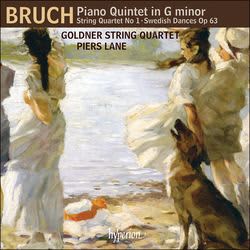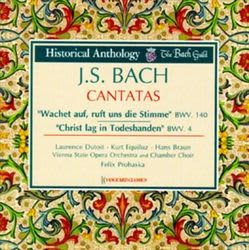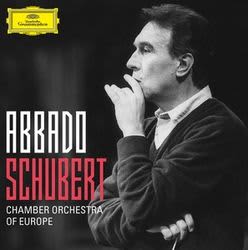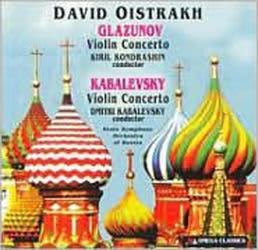Description
Artists
|
For a man of his background in the German late Romantic era, Max Bruch wrote little chamber music, with much of what he did write coming at the very beginning or the very end of his career. His first work of any substance was a septet, composed when he was eleven. It is a great pity that he left us only two string quartets, one of which—the C minor quartet recorded here—was a student work from 1856 and the other was written only four years later. These quartets are ingratiating and melodious but one feels that Brahms—who claimed to have spent his time doffing his hat to old friends while listening to Bruch’s famous G minor Violin Concerto—would have been bareheaded throughout both of them. Bruch was a Rhinelander, born in Cologne on 6 January 1838. His father, trained as a lawyer, had become the city’s chief of police. His mother, from a well-known musical Lower Rhine family, was a distinguished singer who lost her voice quite early and thereafter gave singing lessons. There was other music in the home, as his mother was the centre of a group who met regularly to run through four-part choruses, folk songs and operatic ensembles by Mozart, Beethoven, Cherubini, Weber and so on. Max and his sister Mathilde had their first piano lessons from their mother, and Mathilde, who lived with Bruch at various stages of his peripatetic life, was later on friendly terms with many of the great composers of the era. At first Max showed talent as a painter but from the age of nine music began to absorb him. He learnt theory with Professor Heinrich Breidenstein in Bonn and in 1852 won a four-year scholarship from the Mozart Foundation in Frankfurt, which financed his studies with Ferdinand Hiller, Carl Reinecke and Ferdinand Breunung. In 1856–7 he produced his Op 1, the opera Scherz, List und Rache to a text by Goethe which had already been used by several composers. His teachers encouraged him to travel to other German musical centres and in 1858 he went to Leipzig. In mid-1859 he began studying philosophy at Bonn University but did not stay long, soon going off on his travels and spending time in Berlin, Leipzig, Munich and Mannheim. He had some success with his opera Die Loreley, to Emanuel Geibel’s text originally intended for Mendelssohn, but it was his male-voice cantata Frithjof: Scenes from the Frithjof saga, completed in 1864 after a long gestation, that set the seal on his reputation as a composer to watch. Although he wrote three excellent symphonies, Bruch became most highly regarded as a composer of choral music. Today virtually none of it is heard. For much of his career Bruch worked as a conductor, first in Coblenz (1865–7) and Sondershausen (1867–70). For the next three years he was based in Berlin, then he was in Bonn from 1873 to 1878, before returning to Berlin for two years. He even came to Liverpool, as director of the Philharmonic Society from 1880 to 1883, before taking off for a tour of New York. At last he achieved a reasonably settled period, as musical director in Breslau (now Wrocław in Poland), from 1883 to 1890. From 1890 to 1911 he taught composition at the Hochschule für Musik in Berlin—Ralph Vaughan Williams and Ottorino Respighi were among his pupils. His seventieth birthday in 1908 was celebrated throughout Germany and especially in Cologne; but for his last nine years Bruch lived in retirement, feeling forgotten and out of tune with the times. The Great War caused him the same problems as any other German, with constant shortages of necessities, and the celebrations of his eightieth birthday were inevitably muted. It was during this period that he returned to writing chamber music, in 1918–20, with two string quintets and a string octet. He died in Berlin on 2 October 1920. Bruch had the reputation of being a difficult man—he often said vicious things about people who had helped him in his career—and no doubt his personality problems contributed to his life of a rolling stone. The String Quartet No 1 in C minor, Op 9, was composed in 1856 at the Igeler Hof, a country house—formerly a farm—in the hills near Bergisch Gladbach, where Bruch was a welcome guest from the age of twelve. He knew both the families who owned it in his time, first the Brussels-based Neissen family and then, from 1888, the Zanders family, and much of his music was written during summer stays there. The quartet opens with an Andante introduction, where we initially hear the first violin. The substantial Allegro ma non troppo is based on an energetic first theme and a more flowing, lyrical second theme. The model appears to be Mendelssohn, not so much the early quartets as the Op 44 set, and the working-out is full of fire. The Adagio has a restful, very lovely main theme: a contrasting section is followed by a brief return of the slow tempo. The vigorous scherzo, Allegro molto energico, has a lyrical trio section, based on a folk tune, which Bruch brings back just before the coda. The finale, Molto vivace, begins in stressful mood before relaxing into a merry dance, quite like a tarantella, with two excellent themes. Rather misleadingly, Bruch later attached the year 1858 to this work, as he carried out minor revisions before the quartet was published by Breitkopf & Härtel in 1859. The Swedish Dances, Op 63, are reflections of Bruch’s lifelong interest in folk music, and date from the first half of 1892. They were first written for violin and piano—Bruch had help from Joseph Joachim with the violin fingerings and phrasings—but the composer also made transcriptions for piano, for piano duet and for orchestra. A Prussian army bandmaster prepared an arrangement for military band. They were published by Simrock in two books, the first containing an introduction and seven dances, the second containing a further seven dances and a shortened reprise of No 1 to round off the sequence. Having seen how Brahms’s and Dvořák’s dances had bounded out of Simrock’s Leipzig warehouse, Bruch obviously hoped to make a similar killing. ‘There is no question’, he wrote to Fritz Simrock from Berlin on 14 July 1892, ‘that these pieces will be quickly boiled, baked and roasted, and easily spread about on foot and on horseback. Just like the Hungarian Dances.’ Alas, although the violin-and-piano versions have stayed on the fringe of the repertoire, the other scorings have had only sporadic performances since the initial interest died down. Perhaps the problem is that the pieces lack the instantly catchy melodic profile of the Hungarian and Slavonic Dances. Nevertheless, these are attractive and rhythmically varied pieces. The Introduction is like a call to attention and Bruch more or less alternates masculine and feminine dances: Nos 1, 3, 5, 7, 9, 10 and 13 have a strongly rhythmic character, while Nos 2, 4, 6, 8, 11, 12 and 14 are gentler and slower. No 7 appears to be a variant of the song ‘Sju vackra flickor i en ring’. No 10 is based on ‘Jössehärads-polska’, also used by Hugo Alfvén in his Midsommarvaka. No 13 is based on the song ‘Mandom, mod och morske män’. One of the most beguiling of the slower dances is No 14, which is almost like a Scottish tune. Despite the general prejudice in England for German music and musicians during most of Bruch’s lifetime, his period in Liverpool was not entirely harmonious. Nevertheless, he did make friends, among them Andrew George Kurtz, the British-born son of a naturalized German, Andrew Kurtz Snr, who settled in England in 1816 and built up the Sutton Alkali Works, a chemical plant at St Helens. Andrew Jnr, educated as a lawyer rather than a manufacturing chemist, reluctantly took over the business on his father’s death in 1846. His real interests lay in music and painting: at his home, Grove House in Wavertree, which he shared with his cousin and housekeeper Julia Turner, he had a large collection of modern art in a gallery which he opened to the public. Besides being one of the more cultivated members of the Liverpool Philharmonic Society committee and chairing it for thirty years, Andrew G Kurtz was an excellent amateur pianist and entertained fellow music-lovers at his home. The group had a regular string quartet and in 1881 Bruch undertook to provide a piano quintet for Kurtz and his friends—Ebenezer Prout had already written them a piano quartet. Busy Bruch took an unconscionably long time over the four-movement quintet, but by 1886 he had got part of the way through the finale and he let Kurtz have this torso with a dedication in English: ‘Composed for and dedicated to Mr A.G. Kurtz in Liverpool, Breslau 1886.’ In January 1888 the Liverpudlians wrote to the composer: ‘We are all anxious for the completion of the work—which of course we rarely play because of its incompleteness, and because we have been anticipating every week to receive the conclusion of the last movement.’ Bruch stirred his stumps and sent the full finale. Ironically Kurtz was able to enjoy the complete quintet for only two years, as he died suddenly, aged 65, in 1890 on holiday in Wales. Almost a further century passed before the piece was published in 1988. The Piano Quintet in G minor is carefully written so as not to overtax the strings, who often play in unison. Kurtz’s stature as a musician is reflected in a piano part which, though not virtuosic, requires agile fingers. Bruch originally placed an anxious injunction at the start of the Allegro molto moderato: ‘Not too fast! M.B.’ The strings have a wistful chorale theme (Tranquillo) which is twice answered by the piano before a bold faster theme takes over, then a lovely slower theme is introduced; the chorale returns, then the faster theme, then the slower theme leads into a fierce development. The two main themes are reprised in the recapitulation and the chorale returns again just before the brief coda. The song-like 3/8 Adagio, in E flat major, is introduced briefly by the piano; the strings have a lissom theme which is quite passionate and there is a contrasting idea, not much faster, before the main theme returns, works up to a fervent climax and then dissolves into a quiet ending. The Scherzo is playful, with a light, Mendelssohnian touch, although scalic passages recall the similar movement in Schumann’s Piano Quintet: the singing, lyrical Trio is nostalgic in mood. The Allegro agitato finale effectively alternates a heroic theme with slower music, until the heroic gestures have the last word. Since its publication, Bruch’s Piano Quintet has had many outings. It creates a refreshing effect in performance and makes one regret that Bruch did not write more chamber music for professionals. Tully Potter © 2016 |









